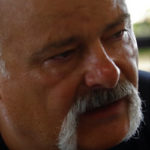 I practiced Judo for a number of years before Aikido.
I practiced Judo for a number of years before Aikido.
Karate antedates that in its own right. Starting with my Karate times clean on into my Judoing years people around me, those I consider well-educated and cultivated, used, in proper ways, to criticize and warn me. Such ‘sports’ full of action were no sports at all and that the practitioners of them were, in general, less-educated and not-so-favorable types. Those that stood closer on the other hand used to exclaim Haaaai! Hoooooi! and have their good lot of fun with me.
For sure, I did not share their opinion and countered their kokes with a smirk.
The same reaction I got during my Aikido years.
…and I always thought about how I could overcome this.
I had university education, used to read and write and a cultivated kind of person -as much as I was. I practiced those sports people looked down upon with great joy.
Then, where did these quandaries come from?
Those action movies from China that were all over and leaving their mark on the 70s and especially the 80s; and their fans. Yes. It was all because of them.
In those movies people used to fly around and take the lives of hoards of people, demonstrating super-natural power and all accompanied by a great many screams and shouts erupting from the core of their being, almost challenging every thread of one’s bond with reason.
Those who watched these movies then, imitated them. This could even be the very sensei himself! … and the sensei would also expect the same from his/her students. They used to shatter wood-planks and roof-tiles with their arms and crush marble with a head-knock -and all accompanied by a sheer scream. However, you could also come across an impromtu change of roles, that is, sometimes, what broke would be somewhat different than one intended to initially break.
In such an environment as part of such a group me and my alikes continued our education against all odds and criticism because we loved it.
Then, years have passed and especially after I started practicing Aikido and after some serious handling of my Japanese sensei, I started thinking very seriously about becoming an Aikido teacher myself.
But then, how could I resist the high-brow social prejudice?
First, I was to cherrypick my students. I tried to make a selection of those individuals that could grasp what I was teaching and that would not just ruin the teaching for their fickle benefits; and I don’t regret this choice although the initial ranks I handled with these feelings didn’t reciprocate with much friendship and loyalty.
I also used to follow very strict criteria in the selection of my dojos and tried to keep within the confines of my own standards.
Also, another focus for me was to train in silence. During practice nobody said a word -nobody- and noone was shouting around. Including the Kiai!
Otherwise, I thought: ‘What would make us different from those hifaluting ones?’
So much so that, where we practised people had difficulties realizing there was a training ongoing.
I used to hear a lot of that Kiai! in the dojos I practised at in my first year in Japan. But not the central dojo.
In the initial years of my teaching I embraced the same approach with the central dojo in Tokyo.
Then, in time, once my target audience embraced Aikido and it became popular some competitive fellows started countering and pelting me, this time on the Kiai’ front. For them this was a significant shortcoming and lack of knowledge and they even managed to reap some immediate gains from it. They even confused some of those who sided with me who then sided with them. But there was this one thing that escaped them. Aikido demands long-term commitment. Populistic approach feels like great success in the short run, which is just seemingly so. But the winning team in the long run involves sweat, knowledge and experience.
That is how not them but me and my entourage have proven to be right.
Almost everyone today, know Aikido the it should be known. That is also why I have no concerns about injecting the Kiai’ in our practice, which is already an integral part of martial arts teaching anyway. We can use the Kiai! with a light-heart especially in bukiwaza (weapon practice), a lot of it.
I am grateful to all my brothers and sisters who, for all these years, trusted me and were around.
My heart is full of the joy and happiness of having gathered this multinational and multicultural ethnic family under one roof.
With its exalted technique and strong international construct, United Aikido Organisation is a family.
As long as we’re together this structure will grow and our happines will multiply.

